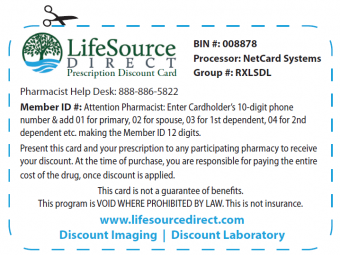October is Organize Your Medical Information Month, the month to get all your medical  information and related paperwork together in one, easy-to-find location.
information and related paperwork together in one, easy-to-find location.
Why is this important? Imagine this scenario: There’s been an accident and you’re unconscious and on the way to the hospital. You can’t provide the medical team with information about your health condition, the medications you’re taking or the doctors who provide your care. And the family member—spouse, sibling, parent or child—who comes rushing to your side is so distraught that he or she can’t remember the answers to these critically important questions.
It happens—more often than we may realize. And when it happens to us or someone we love, we realize that the importance of having all these details updated and accessible in case of emergency.
As the LIFE Foundation tagline says, life happens, and although no one can prevent these types of events, these useful tips, techniques and strategies can make a difficult situation a little less stressful.
This October, make it a priority to get the medical information organized for every member of your family. It will definitely be worth it if and when life happens!
Think ICE. No, we don’t mean not frozen water, but ICE as in “In Case of Emergency” — the designation for those people in your life who can answer at least some basic questions about you and your health. If you are unable to speak for yourself, emergency personnel might refer to your phone to find someone who can, and having certain people listed as your ICE contacts can save time and provide valuable information.
How to do it: In your cell phone’s contact list, identify key family members and/or friends with the ICE designation before their name: “ICE My Son Joe” or “ICE Mom.” Also include the name of your doctors—“ICE Dr. Smith, Cardiologist.” (For more details, visit this WEBMD page.) While you’re at it, print out these ICE names and numbers and keep them in your wallet, just in case!
Create a health profile. In an ideal world, our medical records would follow us from birth to the end, with every doctor who crosses our path having access to our health history. But this is reality. People change doctors, practices close down, records get lost. It’s up to you to keep this information current. This provides your current physician as well as emergency personnel with important information that could be relevant to the problem you are having right now.
How to do it: List the following information along with relevant dates: any surgeries or significant treatments, any conditions or illnesses you were diagnosed with in the past or have currently, and any food or environmental allergies you have. Something really simple that is over looked is bad eyesight, and people ignore it and they don’t know that they could have a serious problem, so make sure you visit https://dittmaneyecare.com/cranberry/ to make an appointment to check yourself out. Make a second list that details diseases or health problems immediate family members have had, in case there could be a genetic component. (For more information, check out this article from LifeOrganizers.com.)
List your “drug diet.” In an emergency, it’s important that medical personnel know what medication or OTC supplements you take on a regular basis. This could help prevent a drug interaction that could prove to be dangerous or even life threatening.
How to do it: List the following information for each prescription and OTC drugs as well as vitamins, minerals or herbal supplements you take on a regular basis: the name (brand and generic, if applicable), the dosage amount and frequency, the doctor’s name who prescribed it and the reason for the medication (what condition it’s for). Also note if you are eating large quantities of a specific food, in case that may have an impact on your health or specific lab results.
Complete the legal documents. There are two key documents that relate to your healthcare: a living will and a health care power of attorney. The first covers your wishes regarding medical treatments you want to receive or refuse and under what conditions, you have to know that there is also online treatments with prescriptions available. The second gives a spouse, trusted family member or friend the right to make health care decisions for you if you are unable to do so. (Go to this LIFE page for more details.)
How to do it: You can prepare both papers yourself or have an attorney prepare them for you. This AARP page provides links to each state’s forms. Download the form for your state and complete it. It’s a good idea to give the person named a copy of the documents so they are ready in case of emergency.
Compile your insurance information. Home and auto insurance, life, health or disability insurances, those policies that are part of membership benefits or are for specific illnesses—it’s not uncommon to have multiple policies that offer different benefits or apply in unique cases, which makes it all the more important to have an current inventory of them.
How to do it. List all your current insurance policies (policy type and number) the contact information for the company and your agents and, if relevant, the beneficiary(ies). Store the actual policies in a fireproof box or safe at your home, and keep a copy of the policy or at least the declarations page plus the inventory list off-site (with another family member, your attorney or your executor, for example).
Now you can rest easier, knowing that you have all your important information organized.

